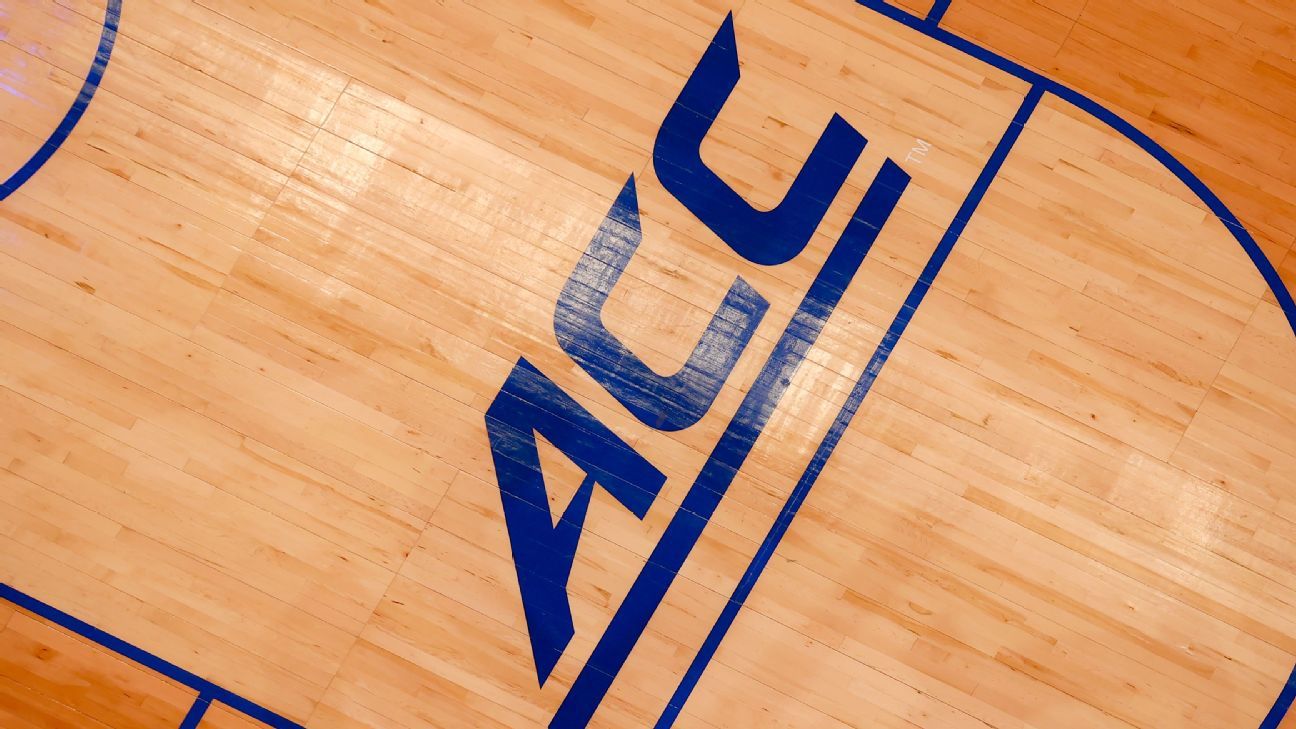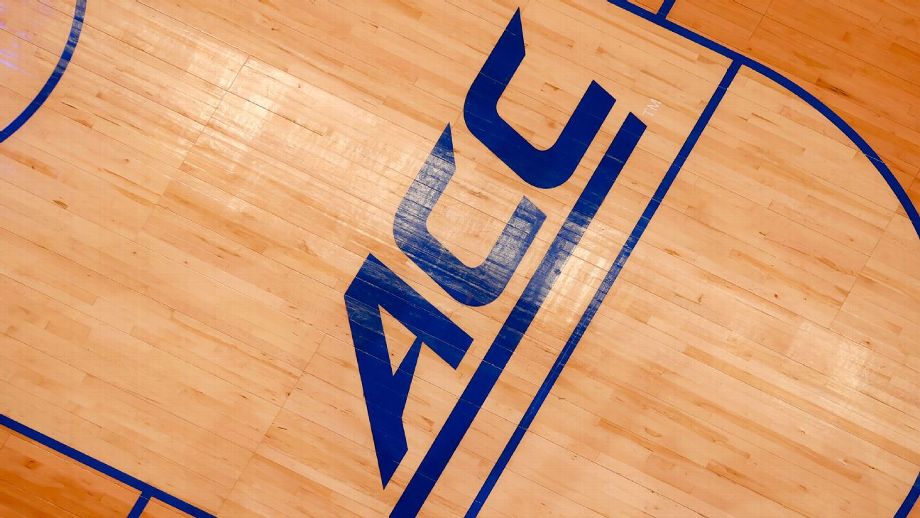
The ACC's expansion into (hoop) uncertainty
The 30,000-foot perspective says Stanford, Cal and SMU joining the ACC is good for both the schools and the league. Let's take a closer look though.

John Gasaway, ESPN Insider
We've had over a month to digest the news that the ACC will add Cal, Stanford and SMU as members beginning in 2024-25. From the proverbial 30,000-foot perspective, the move appears a win-win for the schools and for the conference.
After navigating a nerve-wracking month where the Pac-12 had already imploded, Cal and Stanford managed to secure landing spots in a storied conference. As for SMU, it's happily returning to the top tier of Division I, almost 40 years after the NCAA slapped the Mustangs football program with the death penalty.
For its part, the ACC is beefing up its membership in case, say, a Florida State, North Carolina and/or Clemson might someday decide to seek greener pastures. (All of the above reportedly voted against the expansion.) The new members also add media markets in the Bay Area and Texas to the ACC footprint.
These would be fundamental considerations for any major conference. Besides, with the Big Ten and Big 12 raiding the Pac-12 (and the SEC having already locked up Texas and Oklahoma), standing pat may have been the path of greater risk for the ACC. Expanding was a logical move for the league.
And yet, purely in terms of the league's men's basketball programs, this particular expansion brings some degree of risk.
Potential for a lopsided ACC
As foolhardy as it may seem, assume for the moment that we can look one year ahead and know what the major conferences will look like in 2024-25. What will we see?The old Pac-12 has dispersed. UCLA, USC, Oregon and Washington are in the Big Ten. Arizona, Arizona State, Colorado and Utah play in the Big 12.
Cal and Stanford, along with SMU, are in the ACC. While the Bears and Cardinal have national championship banners (from 1959 and 1942, respectively) and the Mustangs reached a Final Four (in 1956), these peak performances date to the distant past.
More recently, the trio collectively has not won an NCAA tournament game since 2014. Cal and SMU rank near the bottom of the nation's (current or soon-to-be) major conference programs in terms of performance over the past five seasons. For that matter, current ACC members like Boston College, Wake Forest, Pitt and Georgia Tech are in much the same statistical boat.
Which means in a year's time the ACC will have six members that, for now, rank among the bottom 12 nationally for performance over the past five seasons.
Lowest Average Adjusted Efficiency Margin, 2019-23
(Major-Conference Programs Only)
| SCHOOL | 5-YEAR ADJEM | 2024-25 CONFERENCE |
|---|---|---|
| California | -1.09 | ACC |
| Boston College | +1.96 | ACC |
| Georgia | +3.46 | SEC |
| DePaul | +5.07 | Big East |
| Georgetown | +5.21 | Big East |
| South Carolina | +5.78 | SEC |
| Wake Forest | +5.95 | ACC |
| Pitt | +6.35 | ACC |
| Vanderbilt | +6.35 | SEC |
| Nebraska | +6.64 | Big Ten |
| Georgia Tech | +7.16 | ACC |
| SMU | +8.05 | ACC |
| Source: kenpom.com |
Naturally, the past five years can't provide an infallible map of the future. The past five years don't even track last season with unerring accuracy. Look at Pitt. While the Panthers make our list for most severe five-year struggles, they had a great 2022-23, going 14-6 in the ACC and reaching the NCAA tournament for the first time since 2016.
Perhaps onetime Stanford star Mark Madsen can work similar wonders at Cal, just like onetime Duke star Jeff Capel did in Pittsburgh last season. Who knows?
What we can say in the present tense, however, is that the ACC didn't get as much of a basketball lift from this wave of expansion as its rivals did. Again looking at performance over the past five seasons, the ACC's new arrivals recorded an average adjusted efficiency margin of plus-5.58. That's a good deal weaker than what we see from soon-to-be newcomers to the Big Ten (plus-14.71), the Big 12 (plus-14.90) and the SEC (plus-17.58).
Lean times and bubble worries
Just four years ago, the ACC was master of all it surveyed in men's hoops. Virginia, North Carolina and Duke all earned No. 1 seeds on Selection Sunday 2019. Everyone was buzzing about the Blue Devils' sensational first-year star Zion Williamson. The Cavaliers won the national title. Then the pandemic hit. Florida State was denied the chance to follow up on an outstanding 26-5 regular season. It's possible Chris Mack and the Louisville Cardinals would have written a very different story in the past few seasons if they'd won an NCAA tournament game or two after going 15-5 in ACC play.Virginia hasn't won a game in the field of 68 since cutting down the nets in 2019. Over the same three-tournament stretch (2021 to 2023), the ACC hasn't produced any No. 1 seeds, the league's longest drought since 1988 to 1990.
North Carolina and Duke played a thrilling game in the 2022 Final Four, and the Tar Heels reached the national title game. After being ranked No. 1 in the ensuing preseason AP poll, however, UNC failed to land a spot in the 2023 tournament.
Mike Krzyzewski, Roy Williams, Jim Boeheim and Mike Brey are all retired. In perhaps the unkindest numerical cut of all, the ACC finished the 2022-23 season ranked No. 7 nationally at KenPom, behind not only the Big 12, Big Ten, Big East, SEC and Pac-12 but also the Mountain West.
Of course, statistical outliers in the direction of poor performances have an uncanny tendency to presage better times to come. If you're ACC commissioner Jim Phillips, the concern is not so much that the storied ACC is somehow going to degrade into a second-tier basketball conference. The hazards are instead more mundane but also more pressing.
As long as the NCAA continues to select the tournament field in the present manner, for instance, Phillips will be correct to worry that ACC bubble teams are jeopardized by the prevalence of weak opponents in the conference. That's unfortunate and most certainly unnecessary (there are better ways to select the field, and the NCAA will get there eventually, it always does), but it's also true that this is already the case with the 15-team ACC.
This particular concern will be more salient than ever with the additions of Cal, Stanford and SMU. Then again if the ACC has secured some organizational peace of mind in these fraught times of serial realignment, the bubble worries each March will be well worth it the rest of the year.
